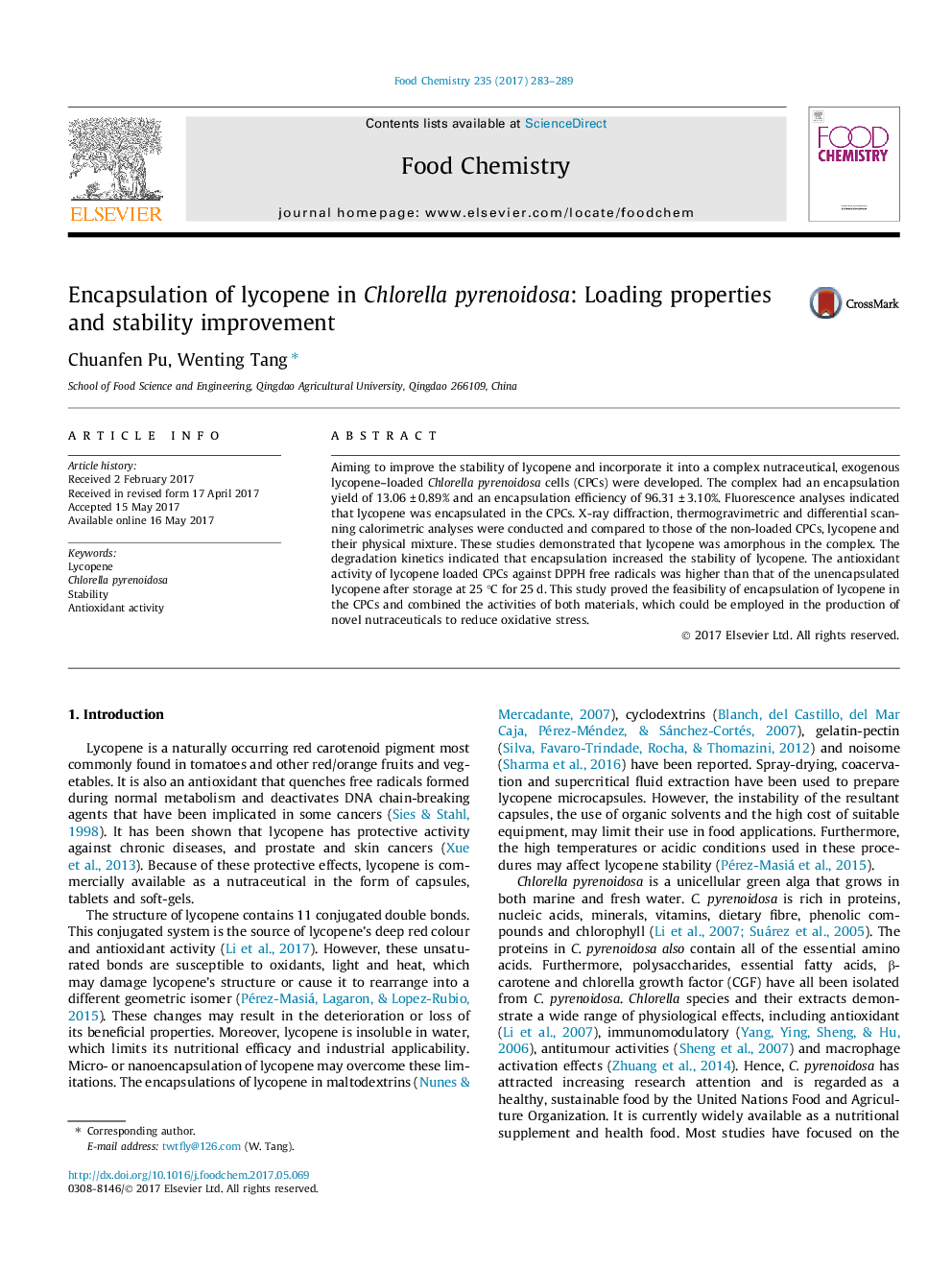| Article ID | Journal | Published Year | Pages | File Type |
|---|---|---|---|---|
| 5133361 | Food Chemistry | 2017 | 7 Pages |
â¢Lycopene was encapsulated in Chlorella pyrenoidosa cells (CPCs) to about 13% w/w.â¢Lycopene changed from crystalline into amorphous state after encapsulated in CPCs.â¢The adsorption sites of lycopene on CPCs were heterogeneously distributed.â¢The encapsulation of lycopene in CPCs improved its stability.â¢The complex retained higher antioxidant effect than lycopene after stored at 25 °C.
Aiming to improve the stability of lycopene and incorporate it into a complex nutraceutical, exogenous lycopene-loaded Chlorella pyrenoidosa cells (CPCs) were developed. The complex had an encapsulation yield of 13.06 ± 0.89% and an encapsulation efficiency of 96.31 ± 3.10%. Fluorescence analyses indicated that lycopene was encapsulated in the CPCs. X-ray diffraction, thermogravimetric and differential scanning calorimetric analyses were conducted and compared to those of the non-loaded CPCs, lycopene and their physical mixture. These studies demonstrated that lycopene was amorphous in the complex. The degradation kinetics indicated that encapsulation increased the stability of lycopene. The antioxidant activity of lycopene loaded CPCs against DPPH free radicals was higher than that of the unencapsulated lycopene after storage at 25 °C for 25 d. This study proved the feasibility of encapsulation of lycopene in the CPCs and combined the activities of both materials, which could be employed in the production of novel nutraceuticals to reduce oxidative stress.
